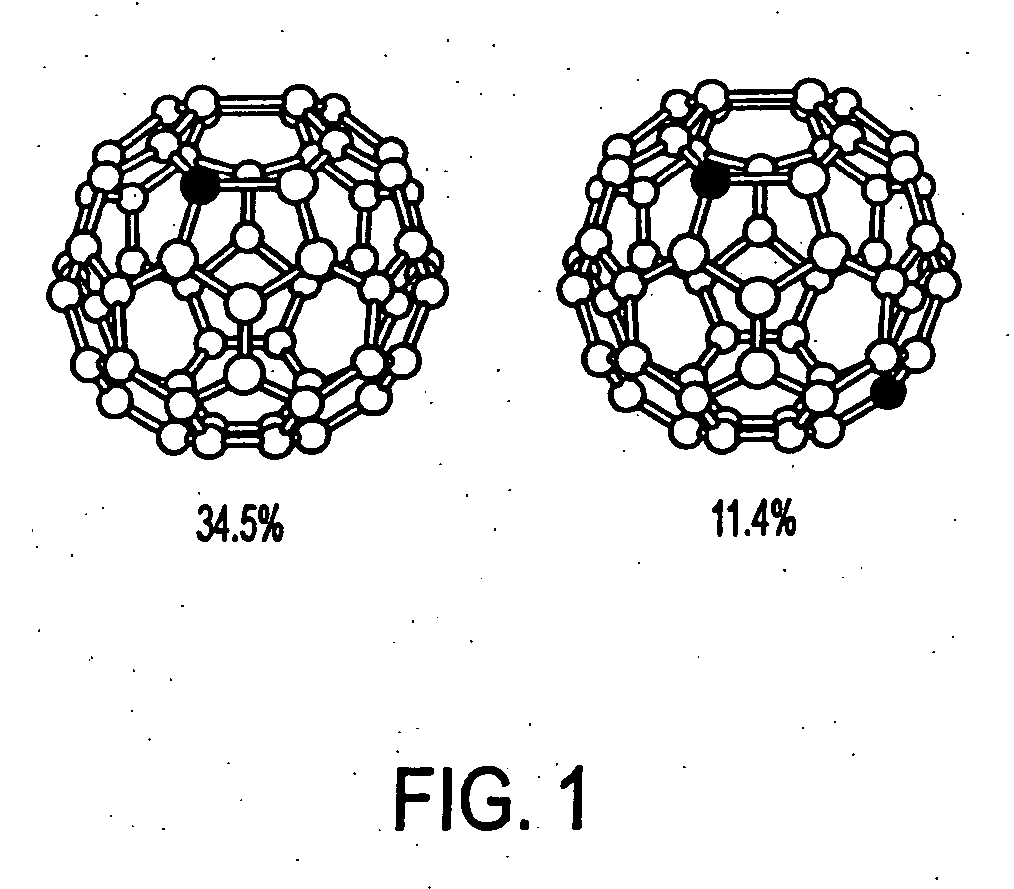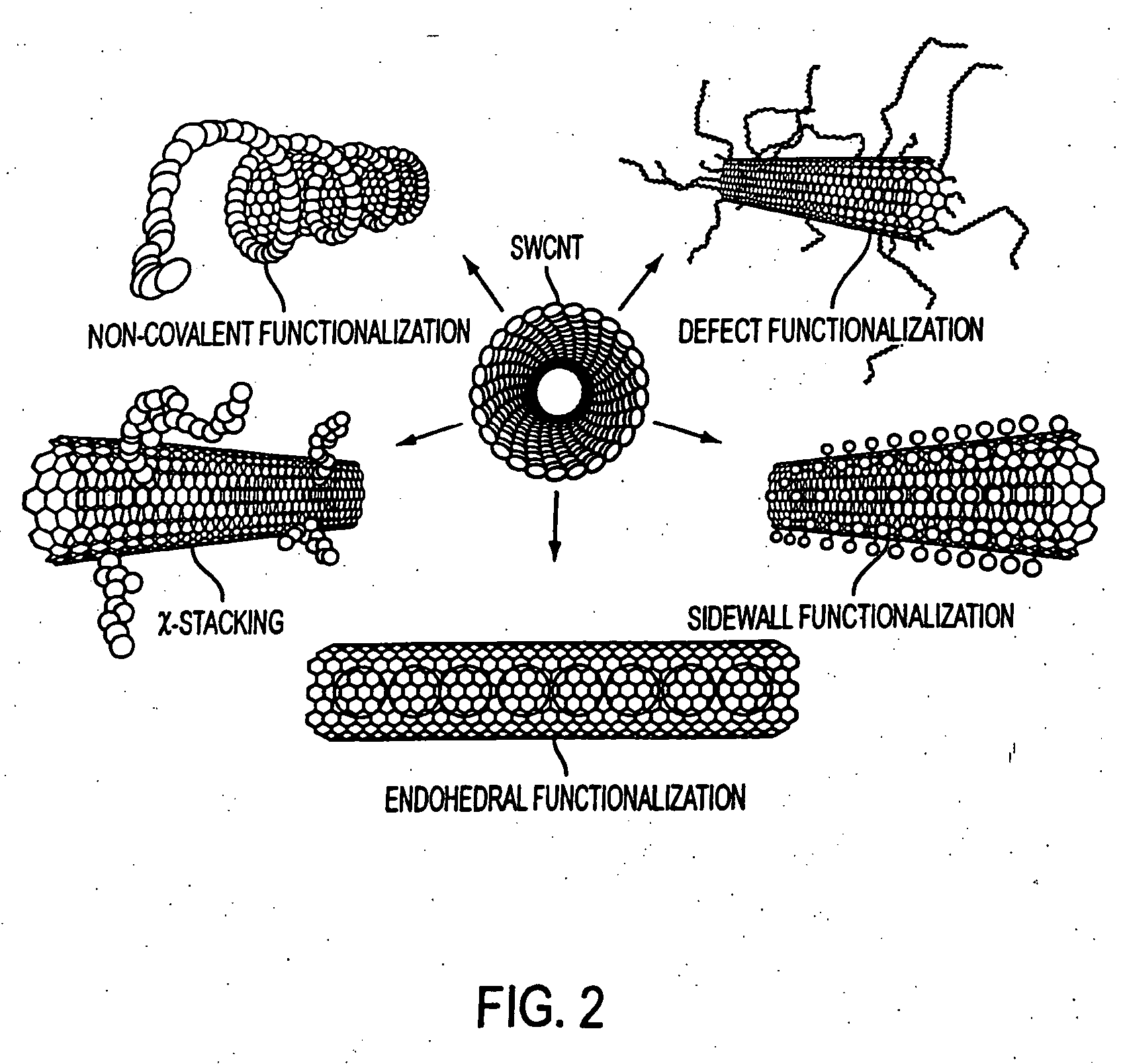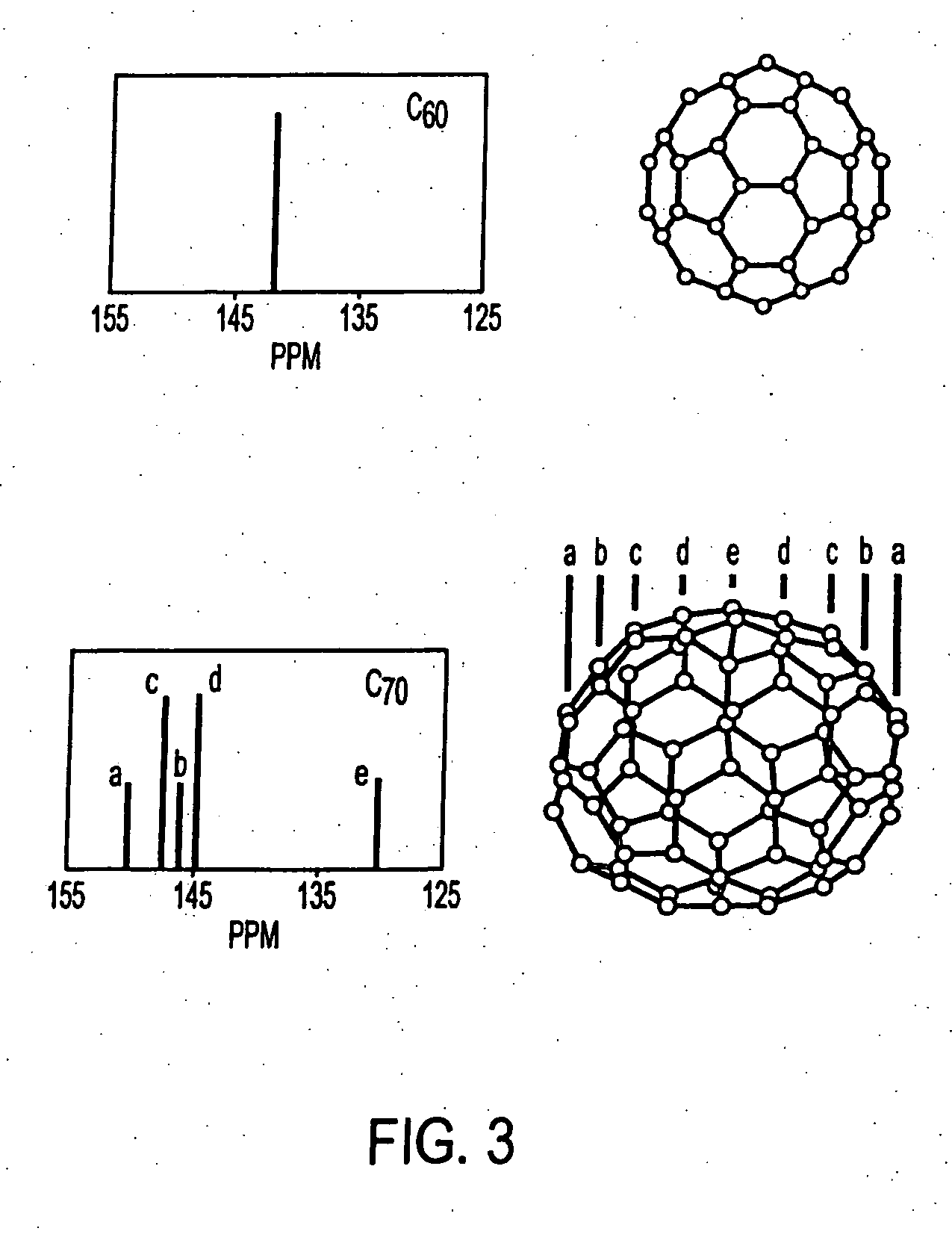Magnetic resonance imaging (MRI) agents: water soluble carbon-13 enriched fullerene and carbon nanotubes for use with dynamic nuclear polarization
- Summary
- Abstract
- Description
- Claims
- Application Information
AI Technical Summary
Benefits of technology
Problems solved by technology
Method used
Image
Examples
examples
[0077] To a sample of solubilized carbon 13 enriched fullerene or CNT is added a water soluble free radical source (0.1%), cooled to 4.2 K and placed in a 2.5 T magnetic field.
[0078] The sample is polarized by microwaves (70 GHz) for at least 1 hour at a field of 2.5 T at a temperature of 4.2 K. The progress of the polarization process is followed by in situ NMR (fast adiabatic passage). When a suitable level of polarization has been reached, the ampule is rapidly removed from the polarizer and, while handled in a magnetic field of no less than 50 mT, cracked open and the contents are quickly discharged and dissolved in warm (160° C.) water.
[0079] Experiment 1: This solution is quickly transferred to a spectrometer and carbon-13 spectrum with enhanced intensity is recorded.
[0080] Experiment 2: The sample solution is inserted into an MRI machine with carbon-13 measurement capability and a picture with enhanced intensity and contrast is obtained by a single shot technique.
[0081] E...
PUM
 Login to View More
Login to View More Abstract
Description
Claims
Application Information
 Login to View More
Login to View More - R&D
- Intellectual Property
- Life Sciences
- Materials
- Tech Scout
- Unparalleled Data Quality
- Higher Quality Content
- 60% Fewer Hallucinations
Browse by: Latest US Patents, China's latest patents, Technical Efficacy Thesaurus, Application Domain, Technology Topic, Popular Technical Reports.
© 2025 PatSnap. All rights reserved.Legal|Privacy policy|Modern Slavery Act Transparency Statement|Sitemap|About US| Contact US: help@patsnap.com



